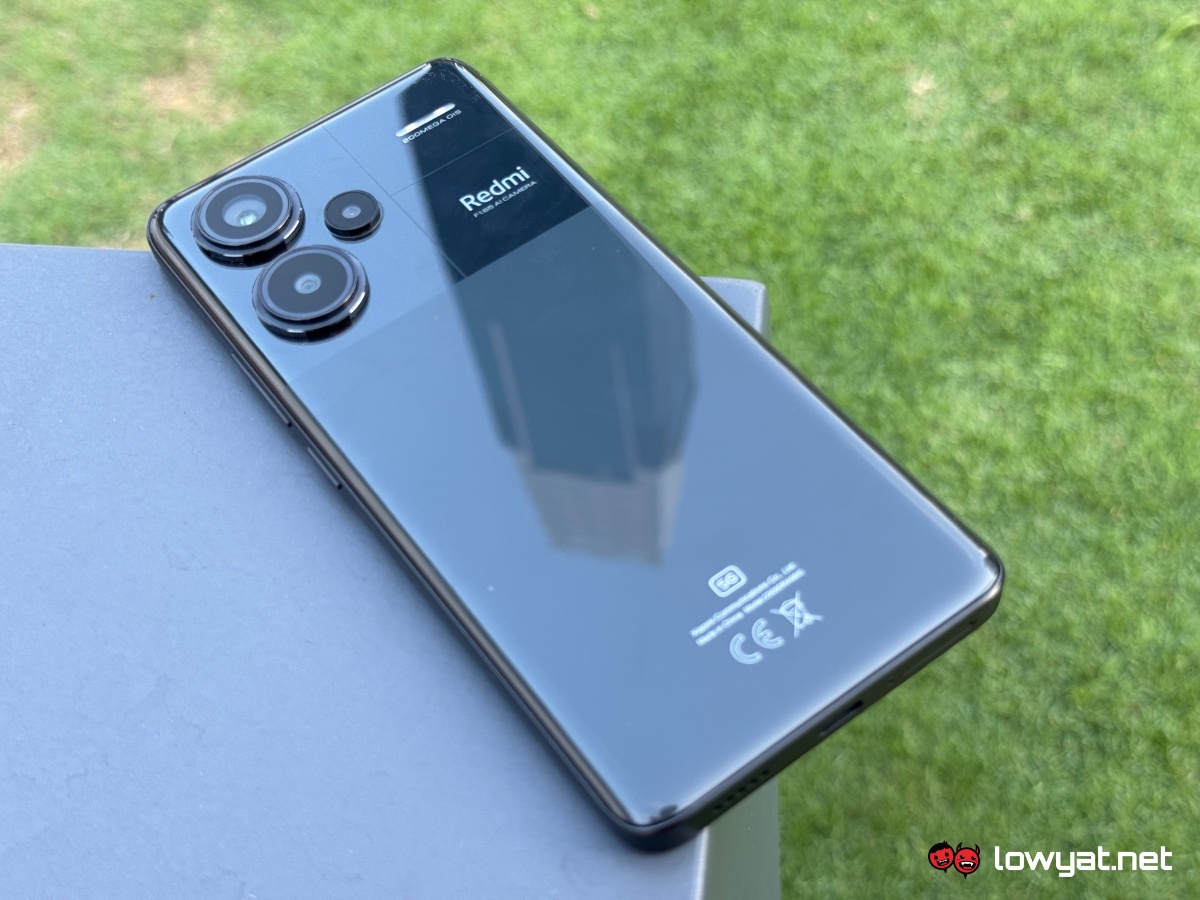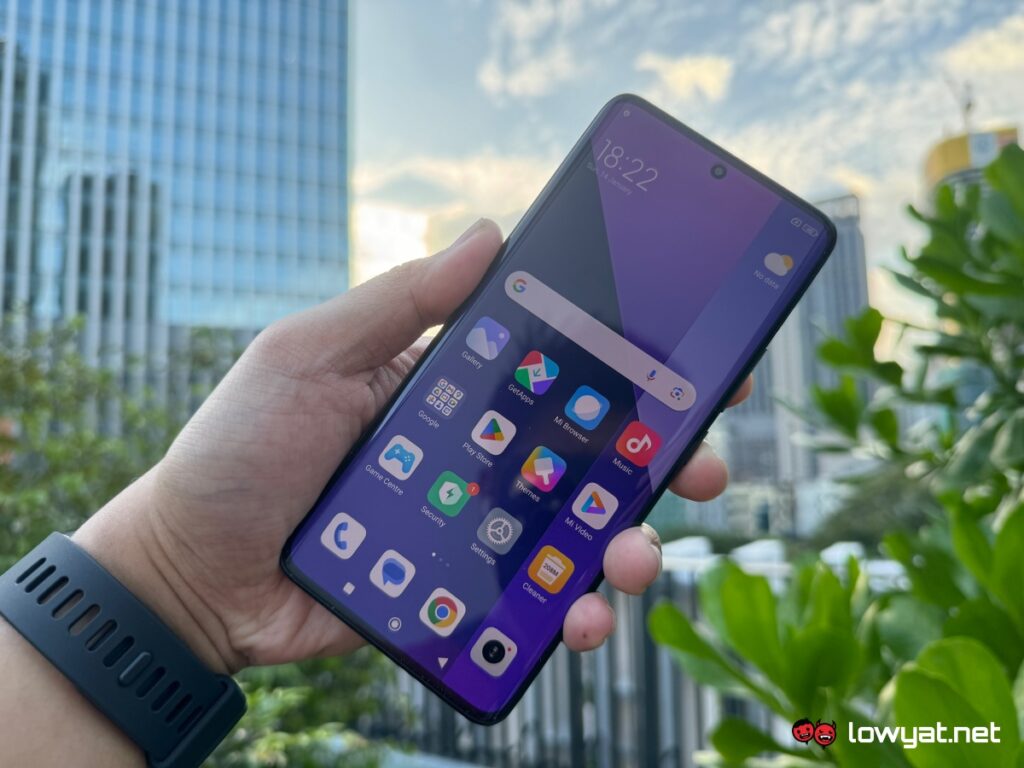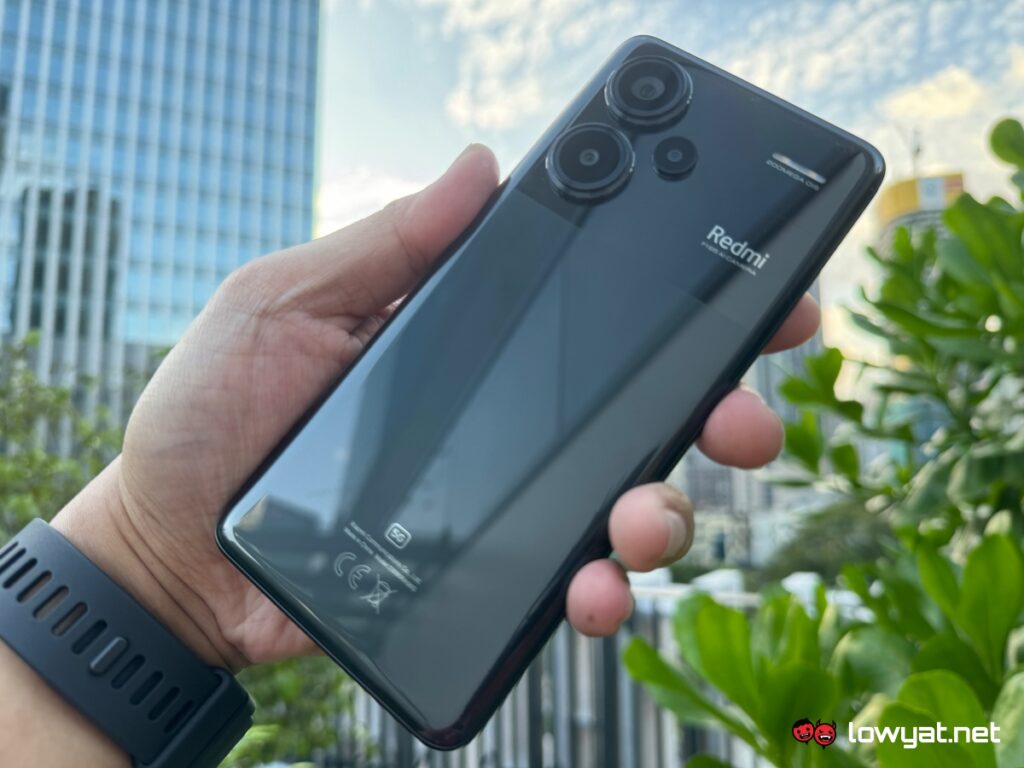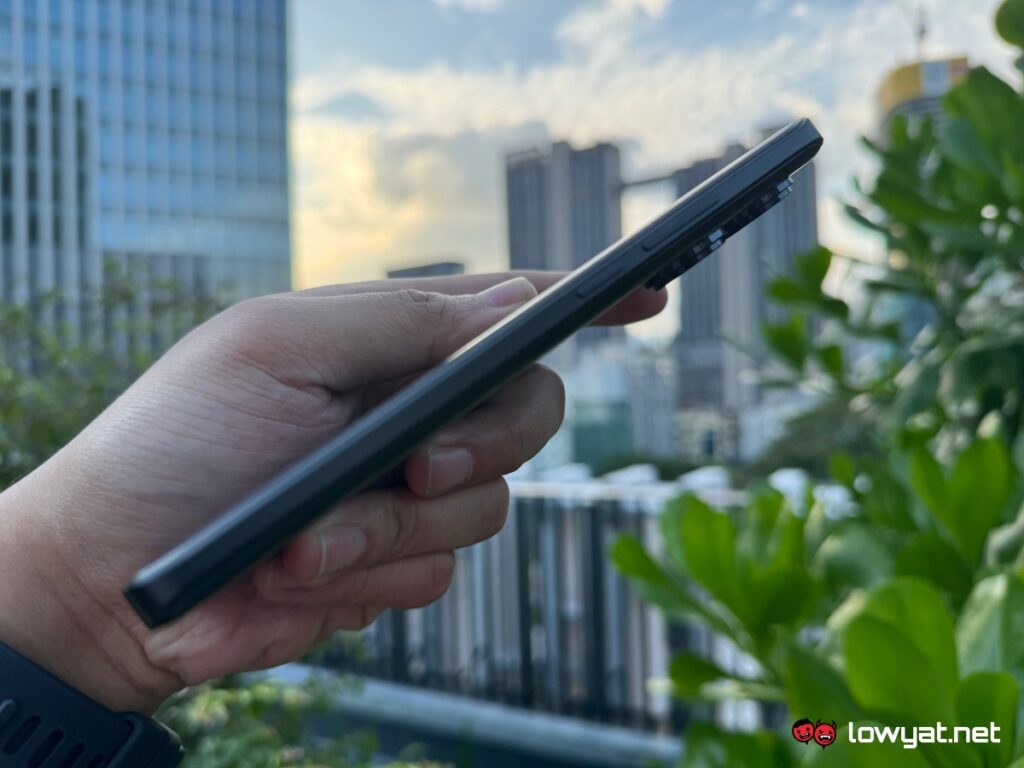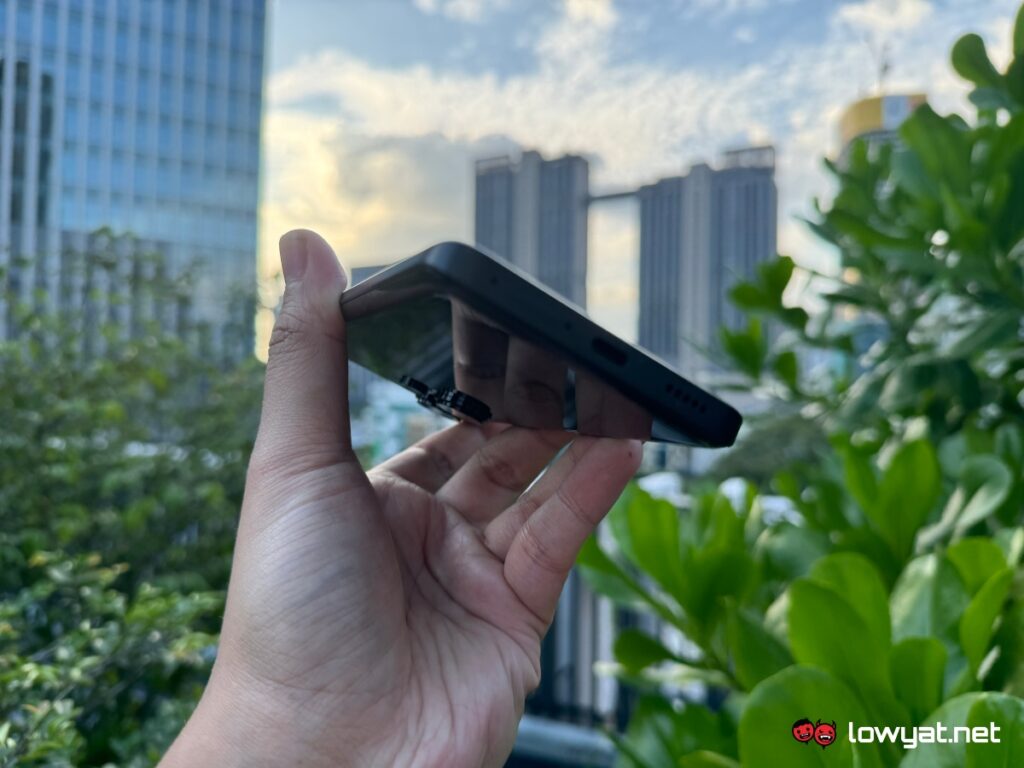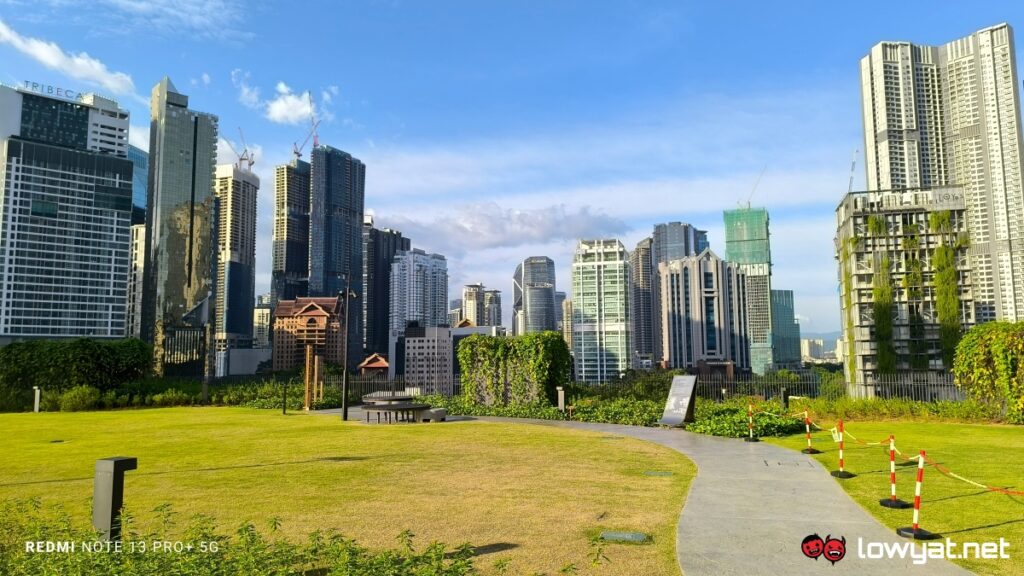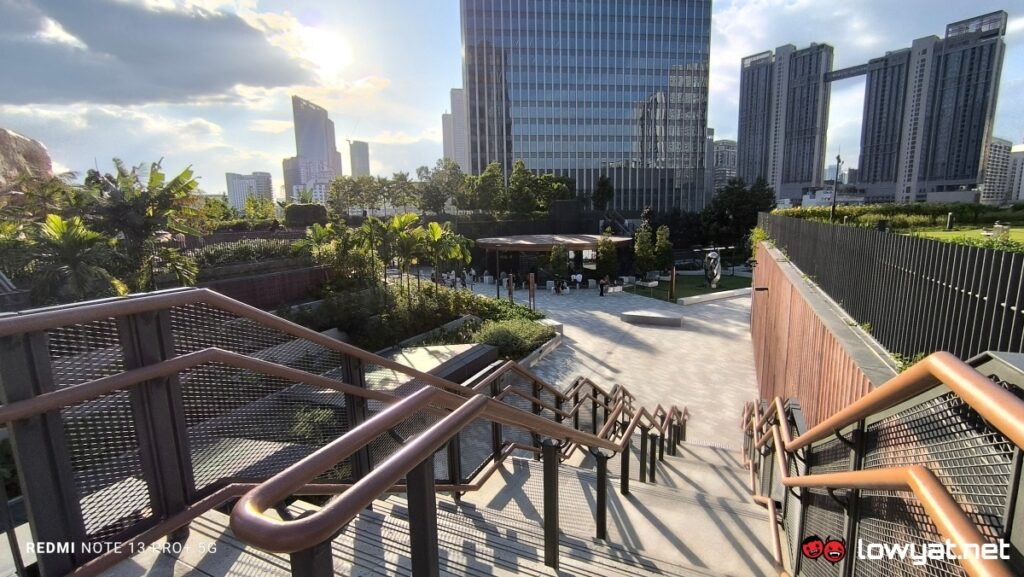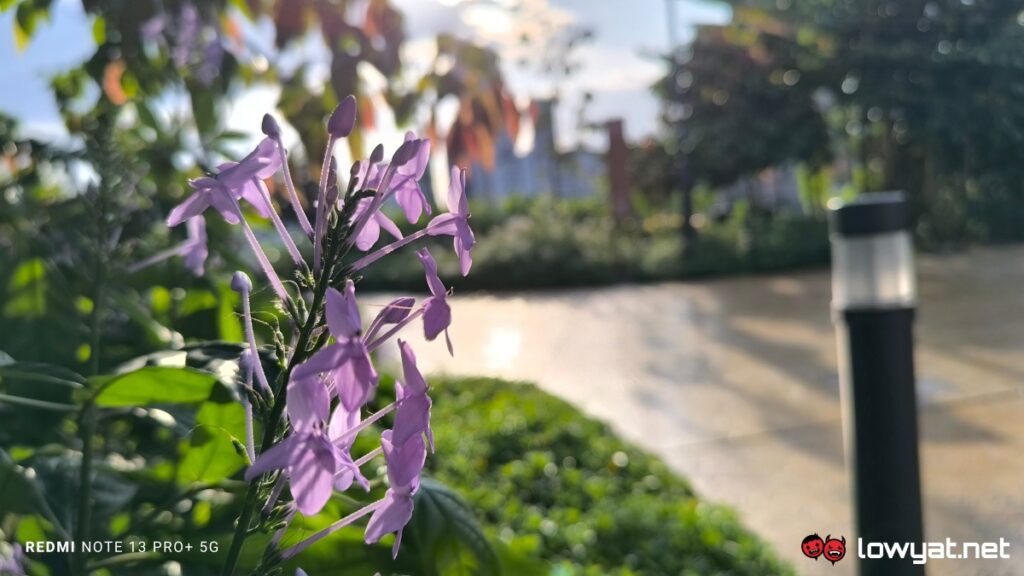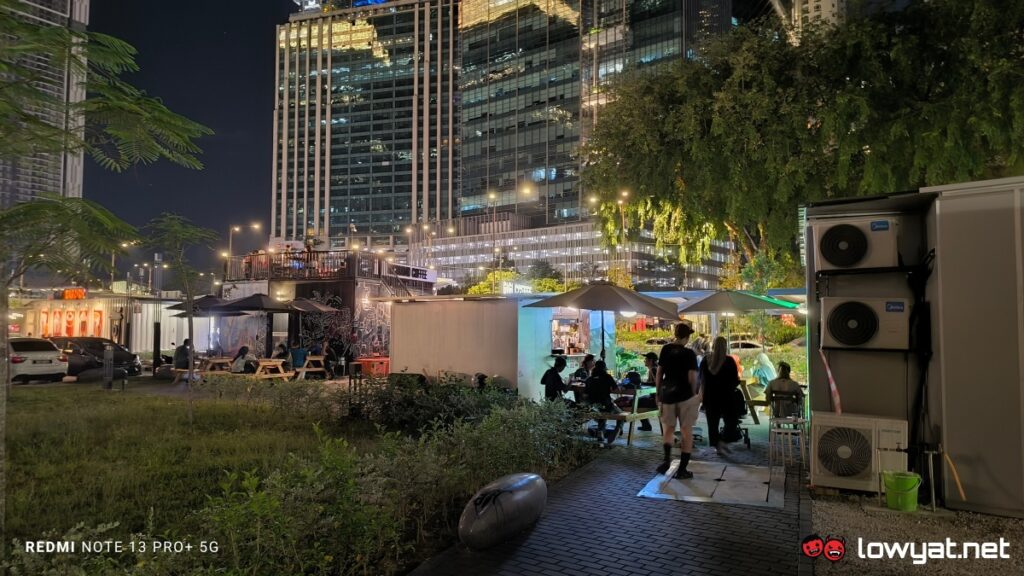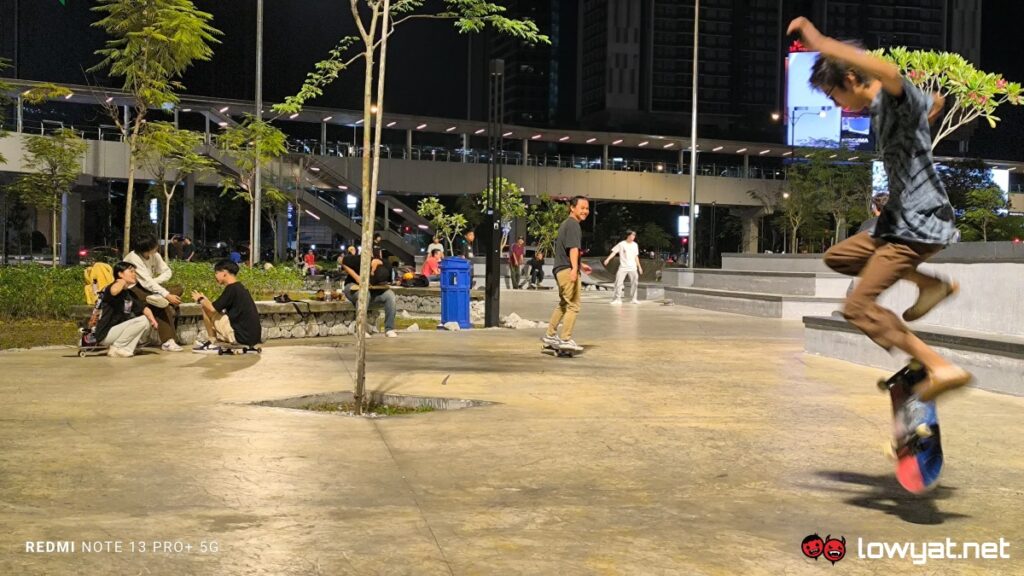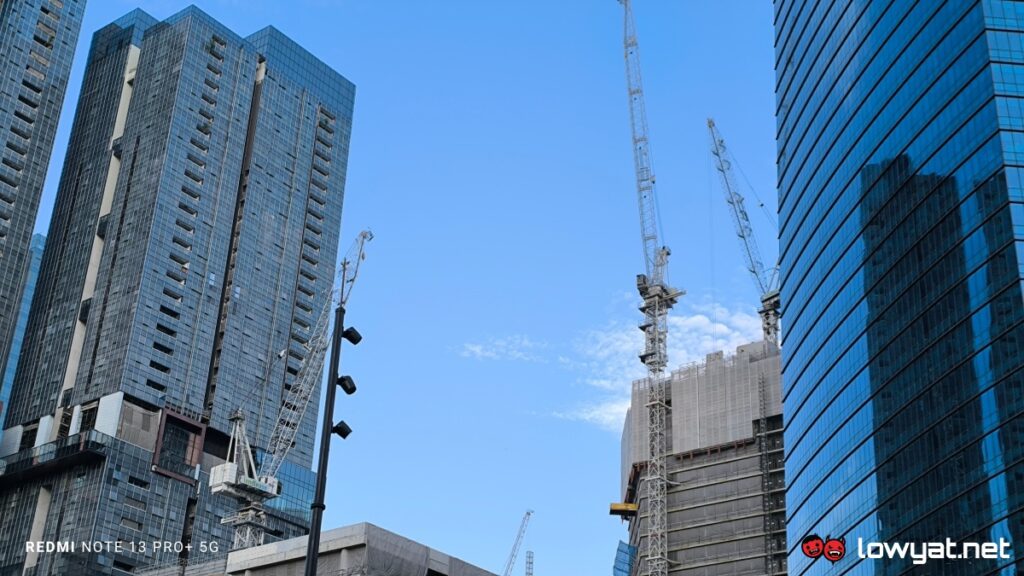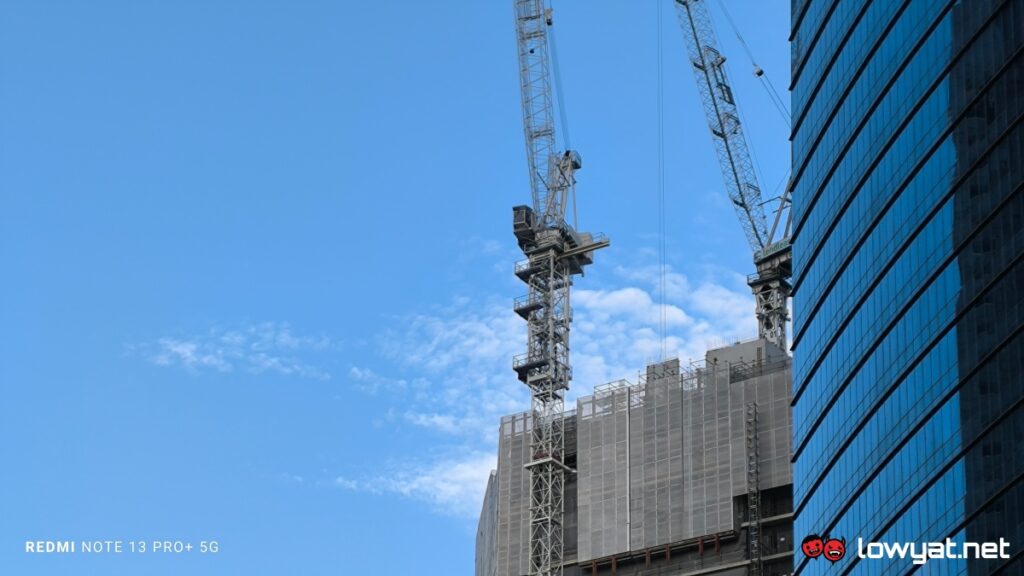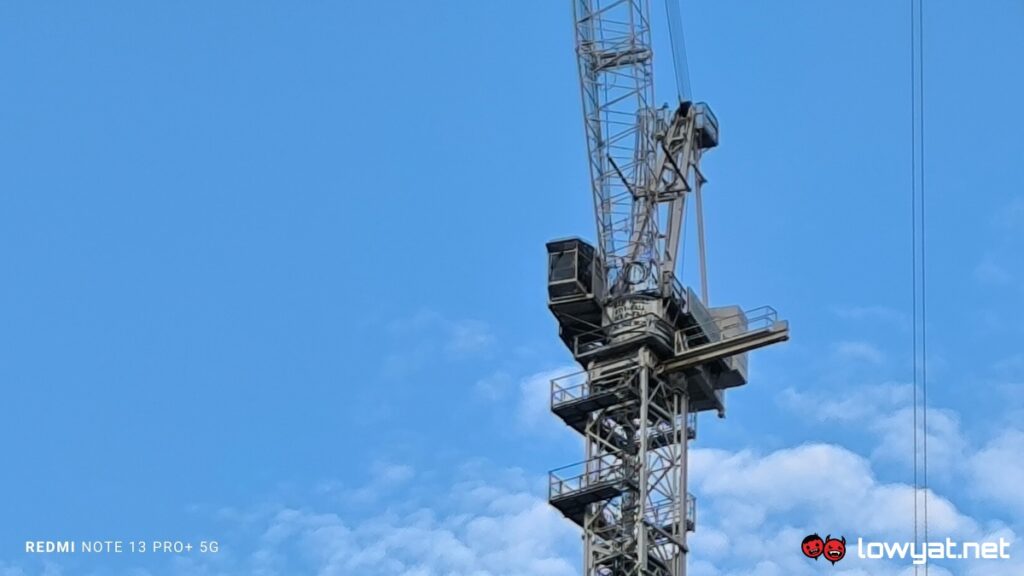Xiaomi launched four new smartphones under the Redmi Note 13 series yesterday evening, with each tailored to cater towards certain user preferences and even budget. In this article, we’ll be taking a look at the high-end variant, the Note 13 Pro+, which is promised to provide premium-level photography as well as above average performance.
For starters, this particular model looks good. So much so it could proudly stand side by side with smartphones within the premium segment, thanks to its curved display, aluminium frame and glossy rear panel. Speaking of the latter, the unit that was passed to me for this hands on writeup is the Midnight Black option. While still attractive, personally I find the hero colourway, Aurora Purple, to be the more favourable choice.
It’s also worth noting that the Note 13 Pro+ is the first Redmi smartphone to feature a curved display, along with considerably thin bezels all around. It measures at 6.67-inches, offers a resolution of 1220 x 2712 pixels, 120Hz refresh rate, and a peak brightness of 1800 nits. Visuals are crisp and vivid, whereas on-screen motion is smooth, which makes the overall viewing experience when reviewing photos and watching videos very pleasant. Even though the phone lacks Xiaomi’s newer HyperOS interface, the onboard MIUI 14 interface still delivers, though it’s not entirely flawless. More on that in a bit.
Performance-wise, the Dimensity 7200-Ultra on the Note 13 Pro+ does well at handling most that you throw at it. Launching and running day-to-day apps is a cakewalk for the MediaTek chipset, and I’ve not noticed any struggle throughout my time with the phone. For the record, the unit which I’ve received comes with 12GB RAM and 512GB of internal storage.
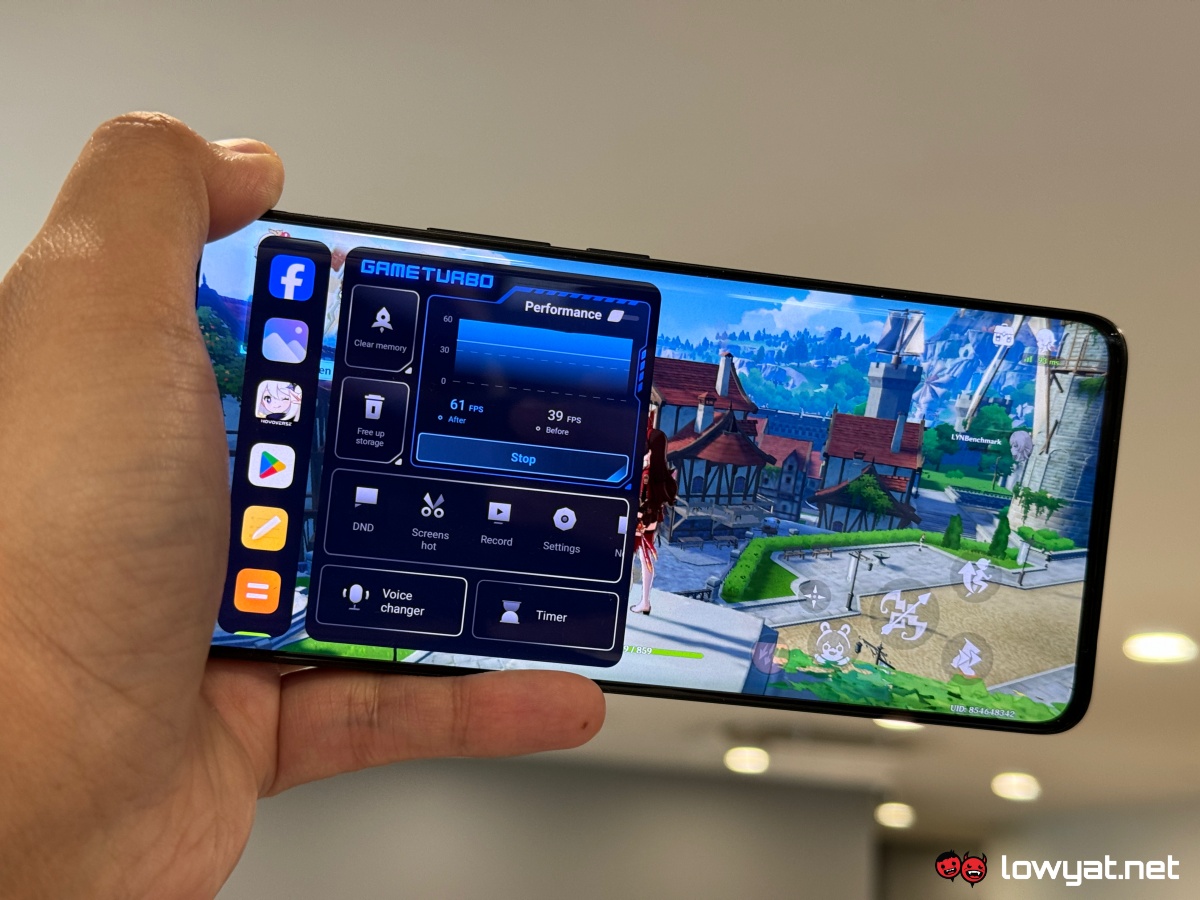
The limitations of the phone’s SoC starts to rear its head when running demanding games such as Genshin Impact, however, where slowdowns and stutters will be present on the highest setting. I also should point out that the phone does feature a Game Turbo feature, which is intended to deliver optimum performance on supported games. While it does provide a noticeable boost, just don’t expect flagship-level performance to miraculously materialise from a mere button press.
Meanwhile, the 5,000mAh battery has left a positive impression on me so far. It’s ample enough to provide a couple days worth of usage on a single charge, provided that you’re not a heavy user. In fact, I last fully charged the phone on Friday last week and there’s still 49% left to spare. Granted, I’ve only been using it for benchmarking and photography.
Speaking of which, the Redmi Note 13 Pro+ really does deliver when it comes to imaging, which is certainly one of its major highlights. Even on the default setting, the camera captures detailed images, while the built-in AI function (which can be disabled) further enhances your shots by boosting saturation and so on. The 200MP feature, as expected, will retain even more details thanks to the higher resolution. On that note, shooting in this mode is actually pretty speedy, unlike the devices of yesterday where a shot would take a second or so.
Of course, the phone’s camera isn’t perfect. For some reason, it does take a while for it to switch to the telephoto lens whenever I select a higher zoom count. Even then, I still need to tap on the screen in order to have the camera focus on a zoomed in subject properly. As a result, shots using this approach may not look great, and this particular issue is much frequent when shooting under low light conditions.
Remember when I said the interface isn’t flawless earlier? It’s very apparent in the MIUI 14’s camera app, as I have occasionally experienced some stutter whenever I activate the cameras on the Pro+. Moreover, performance issues are even more frequent when I try to record videos with the phone, especially when capturing 4K footage.
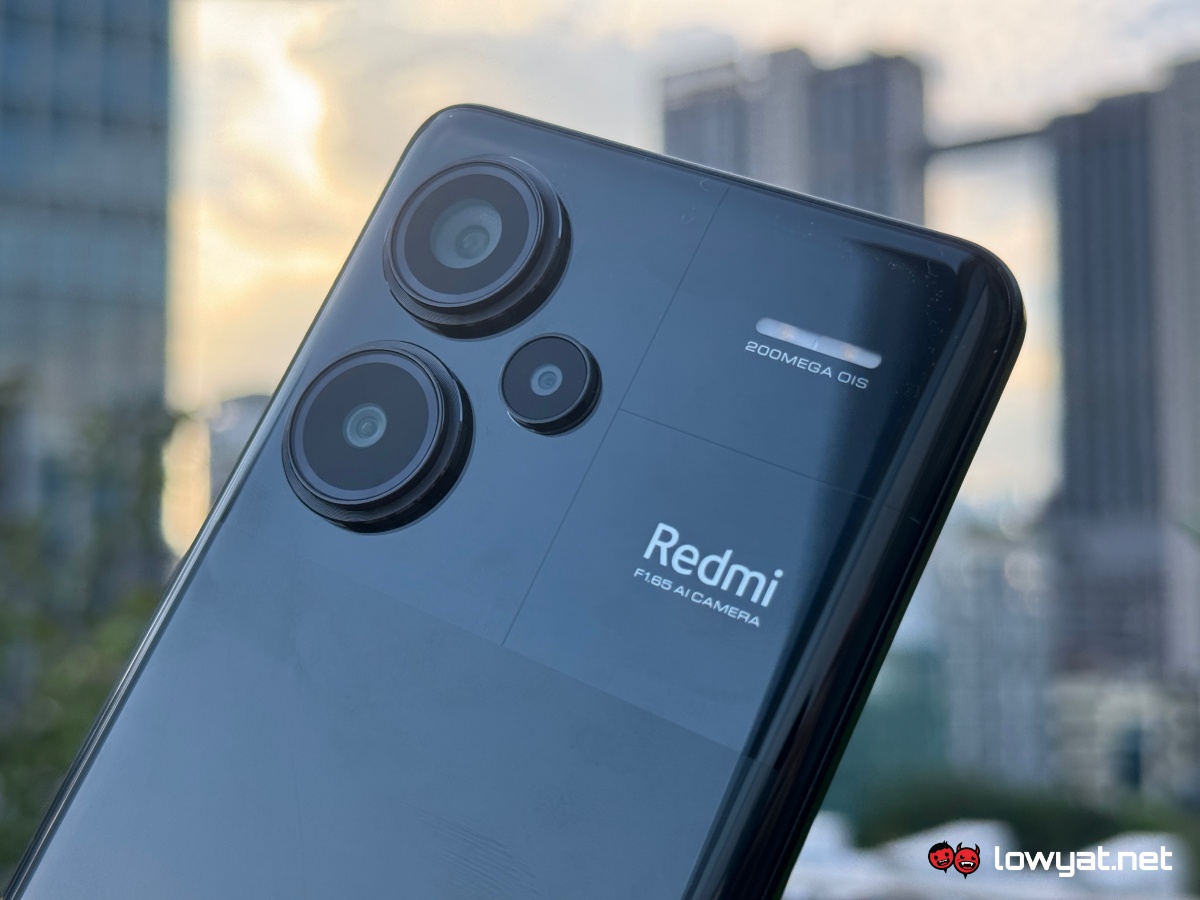
The good news is, these hiccups are mostly on the software level, so its hardware might not be the one to blame. That being said, this is something that Xiaomi could remedy through a firmware update, which I hope could be rolled out once the phone, and its siblings, hit the local market later this month.
To recap, the Note 13 Pro+ will be available in Malaysia from 20 January 2024, starting at RM1,599 for the 8GB RAM + 256GB storage configuration and RM1,999 for the 12GB + 512GB option. This price range is quite a noteworthy deal (no pun intended), especially considering what I’ve experienced so far with the Redmi handset.
Follow us on Instagram, Facebook, Twitter or Telegram for more updates and breaking news.


